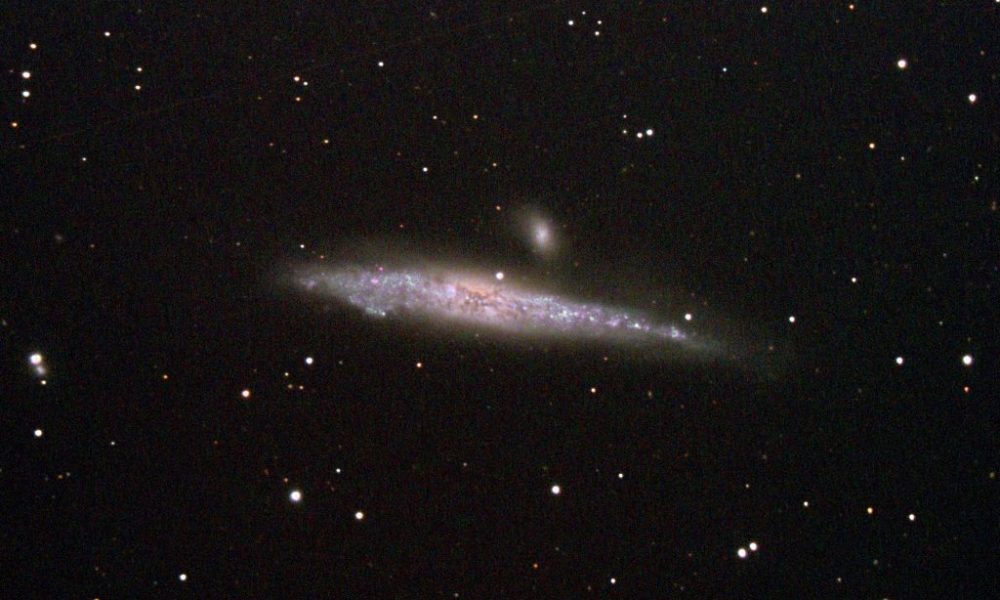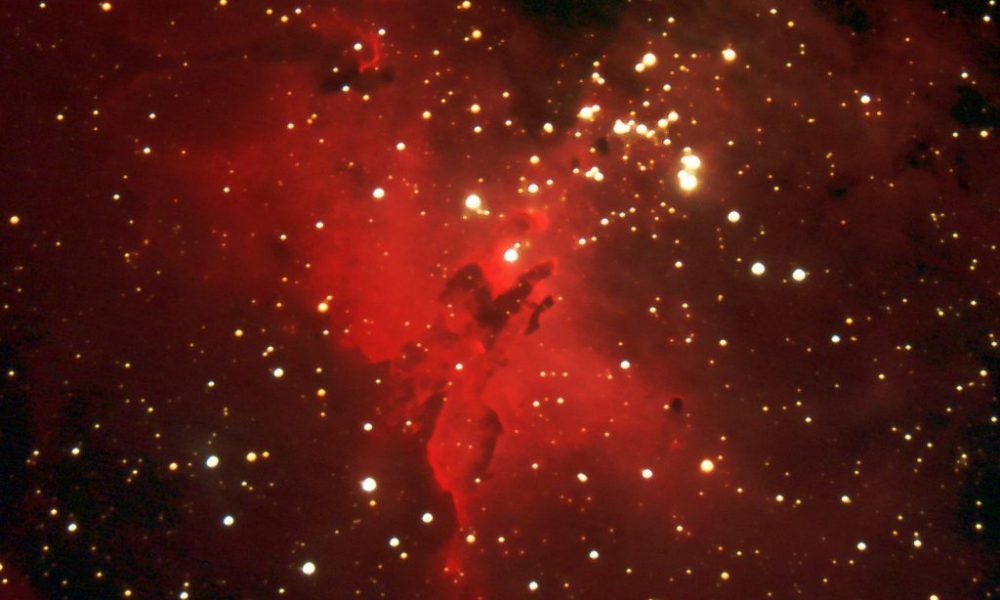More Animals from Lookout Observatory
Dear Lookout Observer,
With much of the world staying at home and keeping a distance from others due to the coronavirus pandemic, it seems we can all use a diversion from our immediate stressors. So to get away from worldly cares, please let me take you up to 30 million light years away. In our last report we looked at 3 animals in the sky. This time it’s a challenge: can you match 6 more animal pictures with each object’s description?
Some of these might be easy because you may have seen them before, especially if you are a long time recipient of these reports. But some might be difficult because astronomers, both ancient and modern, have always had to stretch their imaginations to find meaningful shapes in random sprinkles of stars (called constellations) or fuzzy patches of light in a telescope (nebulae and galaxies). So you might be hard pressed to see the named animal in some of these pictures. But if you can’t figure it out, just ask a friendly 4 to 8 year old. They are usually much better at seeing animals in clouds – or celestial wonders – than adults are.
Happy matching, Carter, Your Lookout Astronomer
A. Eagle First up is the Eagle Nebula located in the constellation of Serpens Cauda (the serpent’s tail). It is a huge emission nebula (dozens of light years across) of glowing gas and dust with an embedded cluster of thousands of stars. A small part of the nebula which is a region of active star formation was made famous as a Hubble telescope image. The full extent of this nebula covers an area of sky about the size of the full moon. It is a typical emission nebula consisting mostly of hydrogen gas energized to glow red from the energy of embedded stars, and containing dark areas where dust obscures the glowing gas.
B.Swan The Swan Nebula is another huge (15 light years across) emission nebula in the constellation Serpens Cauda. It also has a large cluster of embedded stars, with many more in the process of forming. It occupies an area of the sky about ½ the diameter of the full moon
C. Owl The Owl Nebula is a so-called planetary nebula. This kind of nebula got the name ‘planetary’ because in early telescopes they resembled the appearance of planets, being circular, appearing larger than stars, and being fairly evenly illuminated. Like many planetary nebulae, the Owl is a couple of light years across, and it is caused to glow by a central star. A planetary nebula is typically created when a star no more than 8 times the mass of the sun reaches a later stage of its life when its outer layers are driven away from the core to form an expanding sphere of gas, and the remaining star is condensed into an extremely dense white dwarf star. The Owl Nebula is located in the constellation Ursa Major, the brightest stars of which form the Big Dipper. Most planetary nebulae appear quite small. The Owl, even though it is one of the largest appearing ones, looks only about 1/9 the diameter of the full moon. It got its name because it looks like the head of an owl, not the whole bird.
D.Pelican By Now you may be thinking this game is for the birds, but I promise soon we will branch out to other animals. The Pelican Nebula is yet another vast emission nebula glowing with the characteristic red of excited hydrogen atoms. It is located in the constellation Cygnus the swan, and new stars are forming out of eddies of this hydrogen gas. Because it is about three times closer than the other emission nebulae in this group, it appears larger in the sky, covering an area about 2 times the diameter of the full moon.
E. Jellyfish The Jellyfish Nebula is a supernova remnant located in the constellation of Gemini, the twins. A supernova results from the later stages of evolution of a star many times more massive than the sun. When a massive star runs out of thermonuclear fuel, it implodes, forming a dense stellar core called a neutron star. The outer layers of the star collapse toward the neutron star, then bounce outward in a supernova explosion. If a neutron star is spinning rapidly, it produces a beam of radiation, and it is called a pulsar. The radiation sweeps by like a beacon of light from a lighthouse and can be detected as pulses of radio waves and other types of radiation. This particular supernova, which blew up thousands of years ago, is driven by an embedded pulsar, and lies within a giant molecular cloud with varying densities, so its interaction with the cloud material has caused much distortion from the typical more spherical shape of early supernova ejected material. Currently this nebula is about 70 light years across, and the shock wave is expanding at about 20 to 60 miles per second, depending on the density of the material it is passing through. At its distance of about 5000 light years, it occupies an area of sky about 3 times the area of the full moon.
E. Whale Up until now all the objects discussed are within our Milky Way galaxy, from about 2 to 7 thousand light years distant. But for this object we go 30 million light years out in the direction of the constellation Canes Venatici, the hunting dogs. The Whale Galaxy is a spiral galaxy seen edge-on, which appears in the sky to have a length about ½ the diameter of the full moon It is actually about the size of our own galaxy, and looks a lot like our galaxy would look if seen edge-on from that distance. The center of this galaxy is full of star formation and multi-element-rich gases from many previous supernova explosions. There is a small ‘dwarf’ galaxy next to it, which some see as a pup swimming next to its mother whale in the vast astronomical sea.





